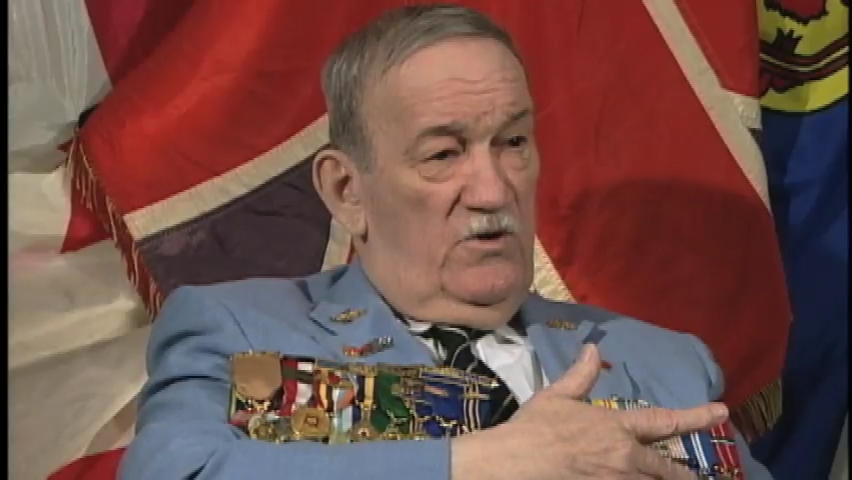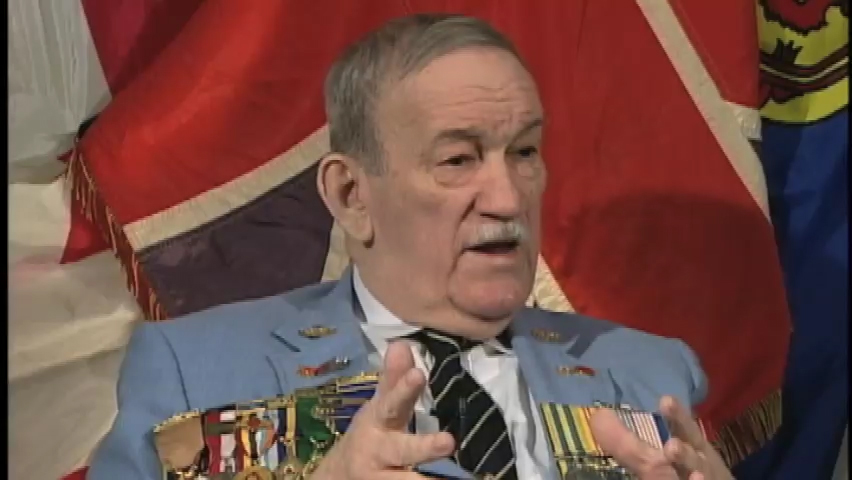The Dead Zone
Heroes Remember
The Dead Zone
Transcript
The beginning of the war they had, I think it was Lockheed
Hudsons they had. Brought them in, they were bombers fixed
with 200 pound bombs they carried mostly. We got one down
in our lounge downstairs on the wall, it's not loaded of course.
But they carried those and they would go out to, till they
hit the dead zone, what they called. They'd go so far. Their,
their fuel would only take them so far out to follow the convoys.
And just out in that dead spot, from there it was, I don't know
how many miles from there before you went to England, and then
the English, some of the English planes would come around,
they worked long range, they come over. So there was a dead spot
of so many miles that that's where the wolf packs, the submarines
stayed. And there was a field day with them, when those convoys
come through, they'd let go, it was a field day for knocking them
them off. I remember one sailor told me or he was actually a
captain of a ship, they requested that the British would put
some long range bombers to come over and the, Air Marshall
Tedder was the head of the air force that time, British. And
he said, "No, we can't let them go, we need them all for going
over to Europe." So poor thinking on his part. I mean they could
have taken a couple of those planes and would have saved one
hell of a pile of lives and also get a lot more equipment over
to England. But those, these ships were sunk with the equipment
and all the stuff they needed over there for the war effort.
Description
During the Second World War, in the middle of the Atlantic Ocean there was an area known as the Dead Zone. Mr. Doolan tells us about the dangers that loomed underwater for unprotected ships crossing the area.
William G. Doolan
Mr. Doolan was born in Sydney, Nova Scotia on May 2, 1930. He grew up during the Second World War knowing that his brother had been made a prisoner of war. When Mr. Doolan was old enough, he joined the militia and in 1950 enlisted in the army to go fight in Korea. After completing his training in Petawawa, he was sent for further training in Japan, and then to the front where he was a rifleman for the infantry. Aside from a bout of malaria, he escaped unscathed and returned home to his family.
Meta Data
- Medium:
- Video
- Owner:
- Veterans Affairs Canada
- Duration:
- 01:35
- Person Interviewed:
- William G. Doolan
- War, Conflict or Mission:
- Second World War
- Location/Theatre:
- Canada
Related Videos
- Date modified:





